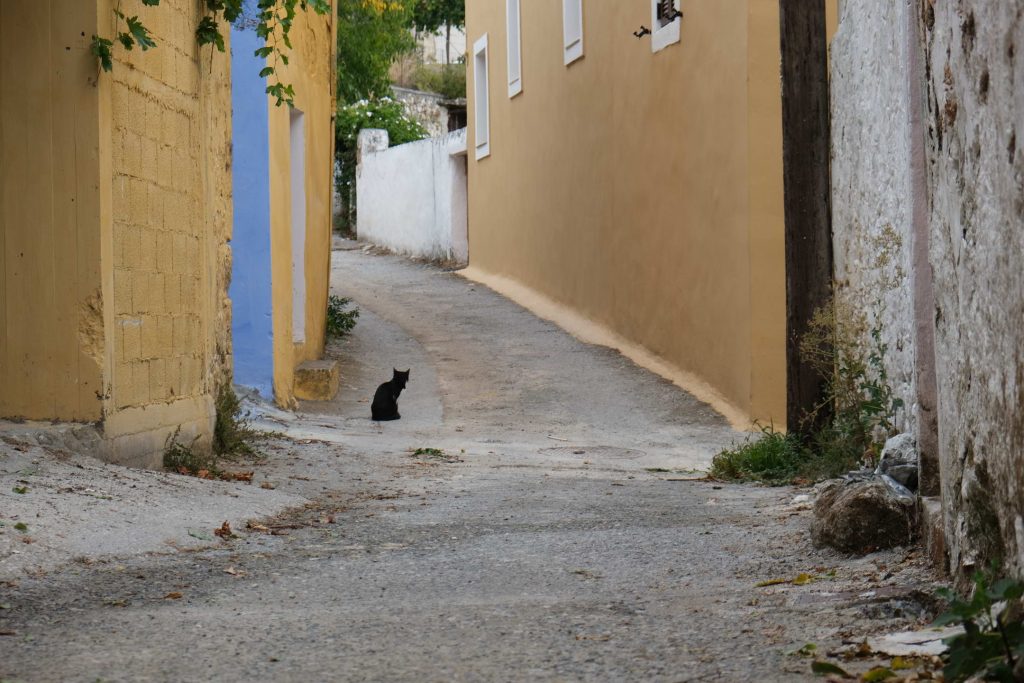If you love nature and tradition, visit Ano Asites built at the foot of Psiloritis. Take a tour of the colorful, picturesque alleys of the village and see up close people who still practice the profession of livestock bell maker or basket weaver who will travel you to the past. Explore the rich natural and morphological environment and walk in verdant gorges with waterfalls and caves that will truly be unforgettable. Events are organized in the village (August 24 to 29), the highlight of which is the festival of St. Ioannis Rigologos on August 29. So, in case you are nearby at that time of the year do not miss it, as you will have the opportunity to try traditional food and listen to Cretan music.
Monuments
- Folklore Museum of Ano Asites has been operating since 1995 in a traditional building built in 1880 and represents a traditional Cretan house.
- Ancient Rizinia Cemetery located 2 km away from Ano Asites. At the edge of the cemetery, next to the road, there are two arched buildings of Roman times preserved in very good condition, the so-called “Siderospilies” (=Iron Caves). According to tradition, these are royal tombs.
Natural Beauty Routes
- Prinos Mountain Shelter Located at an altitude of 1100m, the route to it is ascending rather steeply. The shelter has a rainwater tank and you can warm yourself up, using the wood-burning stove.
- Gorge of Agios Antonios Starts from the church of St. Antonios and ends at Panagia Faneromeni in Kerasia. Is 2 km long and stands out for its dense vegetation and the waterfalls that form along it. It is worth noting that along the route, there is no landscaped path and in narrow places, you may need to walk to the side of the path in order to avoid water.
- Bat cave Near the gorge of St. Antonios, there is the “Nichteridospilo” (=Bat cave), which is one of the four most important caves of Mount Psiloritis; unfortunately it is not accessible. The 100m deep cave is a refuge for bats (Rhinolophus ferrumequinum).
- Gorge of St. Charalambos Starts from the south side of the village, where the homonymous church is located. If you follow the river, you will have the opportunity to admire the wonderful natural landscape with ponds and large caves. It is worth noting that along the route you may need to walk on the side of the path in order to avoid water.
Monasteries – Temples
- Church of St. Ioannis In the old village square, there is the church of St. Ioannis, which according to the inscription was built in 1862.
Gastronomy
Ano Asites is renowned for its long tradition in stock farming, which is greatly favored by the morphology of the soil. There are several stock-farmers in the area and meat, sausage, “apaki ”, “anthotyro ”, “graviera ”, “kefalotyri ”, “mizithra ” and yogurt are produced. You can have a memorable experience with your visit to the winery or the apiary of the village for a direct contact with the “world of bees”, where you can taste and get pure products, such as honey and royal jelly. Visit one of the “rakokazana ” of the area, see up close the traditional way of distilling “tsikoudia” and experience the revelry, with traditional music, baked potatoes, grilled meat and, of course, “raki ”!
Household – Traditional Occupations
In Ano Asites you will find many of the professions of the past that tend to disappear in modern times, such as livestock bell makers and basket weavers. You will have the opportunity to see up close the traditional way of practicing them, to discuss with the professionals and purchase the fruits of their labour. Livestock bells are an integral part of pastoral life and through their sounds, the shepherd can understand if the animals are grazing or are in danger.



